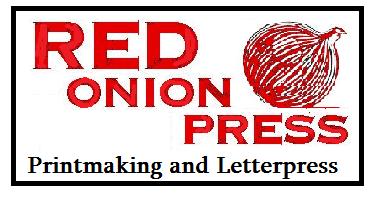With the coronavirus, there hasn’t been any opportunities to take our new “old” traveling hand press on the road for obvious reasons. Recently we received a reprint of a catalogue published by Hickok Manufacturing in 1875 containing a drawing of our Hickok press.
While it doesn’t give a manufacturing date, it’s reasonable to presume based on it’s model number, No. 0 that it is easily one of the earliest cast iron machines made by the 176 year old manufacturing company.
So, this has been a time to test methods and materials and plan for our other goal of producing a first edition of the woodcut illustrated “Classics of Medieval English Literature.” Our conversion of the Hickok book bindery press into a book printing press on wheels has given us a very solid platform to be able to set up and print both the illustrations and text using the 348 lb Hickok standing press as a letterpress.
Sixty years ago when the woodcut illustrations prints were carved and hand painted for Encyclopeadia Britannica's series of film strips it was always the intent of my parents to create a first edition of the series in book form in their studio workshop. An earlier project, a television production of some 80 illustrations to a narrative of the Pardoner's Tale by Chaucer in St. Paul was later published as a first edition of 180 legal sized hand printed and bound folios. Nearly all of these which were sold to patrons and schools in the Midwest serve as the inspiration and guide for our efforts today.
While the woodblocks are in excellent shape, and print well, the challenge in publishing is in the content. The text that is in the slides is a very limited summary of each story given the space limitations of the media and the youthful age of the intended audience. Following the example of the Pardoner's Tale, we would convey the story line using original text excerpts from original and use antique type font to help create the setting. My parents used "Cloister Black" a form of Old English type font, which was popular in the days of letterpress and moveable type and still readily available in the 1960's. Today, while some of this letterpress font can be found and even cast, it is not widely available and would be a challenge to find in the various sizes and quantities we would need to publish even a limited edition work.
One solution we have been experimenting with is laser engraving type from hardwood. Last summer, a small laser etch machine was donated to the Red Onion which is showing promise. Cloister Black font is available in a digital format and when processed through software can be used to print individual fonts and whole paragraphs. The font is processed, reversed and mirrored to create the images the laser uses to carve into the wood. With considerable tweaking to the setup, we have been able to do a number of trial pages with the original woodblocks and text printed side by side. Below are a couple of examples.








